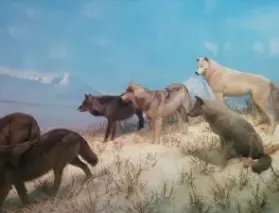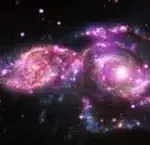This article is written by guest-writer, Maggie Jay Lee…
 Elizabeth Vandiver states in a Teaching Company Course that the first Delphi maxim, gnothi seauton – know thyself, means, “Know what kind of creature you are, remember your limitations, remember that you are not a god, you are mortal.”(1) She interprets this as meaning in effect, “Know your place.” Donald Kagan in an Open Yale Course asserts that, ”The Greeks combined a unique sense of mankind’s high place in the natural order with a painful understanding of the limitations of the greatness and the possibilities before man […] with the greatest limitation being mortality.”(2) He goes on to define gnothi seauton as well as the second maxim, nothing in excess, as meaning, “Know your own limitations as a fallible mortal and then exercise moderation because you are not divine, you are mortal.”
Elizabeth Vandiver states in a Teaching Company Course that the first Delphi maxim, gnothi seauton – know thyself, means, “Know what kind of creature you are, remember your limitations, remember that you are not a god, you are mortal.”(1) She interprets this as meaning in effect, “Know your place.” Donald Kagan in an Open Yale Course asserts that, ”The Greeks combined a unique sense of mankind’s high place in the natural order with a painful understanding of the limitations of the greatness and the possibilities before man […] with the greatest limitation being mortality.”(2) He goes on to define gnothi seauton as well as the second maxim, nothing in excess, as meaning, “Know your own limitations as a fallible mortal and then exercise moderation because you are not divine, you are mortal.”
Gnothi Seauton and Death
It seems that for many classical scholars the main focus of gnothi seauton concerns human limitations and death. In our culture, we are taught to believe that human potential is unlimited, that we can have whatever we want, that we can be whatever we want, if only our will is focused and strong. At least in the rich, developed world, life is longer and more secure then ever, but in the end we all still die. Yet, even death seems to have lost its pathos, so successful have we been at separating death and the grimmer realities of life from our daily routines. What is the value of believing in limitations? Do we limit ourselves if we focus on our limitations?
Aristotle in his Politics states,
“As man is the best of the animals when perfected, so he is the worst when separated from law and justice. For injustice is most dangerous when it is armed and man armed by nature with intelligence and excellence may use them for entirely opposite ends. Therefore, when he is without virtue, man is the most unscrupulous and savage of the animals.”(3)
Surely the first step on the road to injustice and lawlessness is to forget gnothi seauton, to forget what one is and who one should be. Suffering beyond what is decreed by the Moira will surely follow when humans act either like beasts, mindlessly following every desire, or like gods, taking extreme and reckless actions as if one had the perfect knowledge and abilities of a god.
Gnothi Seauton and Reverence
But what does it mean to “know thyself,” to know you are human, to know that you are a fallible mortal? What quality is produced in a person who cultivates gnothi seauton? Paul Woodruff, in his book, “Reverence: Renewing a Forgotten Virtue” makes a strong case that the virtue he calls reverence is such a quality.(4) Woodruff defines reverence, which he equates with hosietes or eusebeia and aidos, as “a well-developed capacity to have the feelings of awe, respect, and shame when these are the right feelings to have.” The foundation of reverence is the understanding of human limitations from which one develops the ability to feel awe for that which is beyond human control — gods, fate, nature, truth, justice and even death, respect for our fellow human beings, even though they too are fallible and imperfect, and shame when our moral failings go beyond what is normal for a human.
Reverence is an Aristotelian type virtue, which is difficult to define with the precision demanded by Socrates. Virtues are characteristic qualities in a person that lead that person to want to do the right thing. Reverence, according to Woodruff, is a virtue because when one possesses it one has the appropriate feelings of awe, respect and shame which lead one to want to behave appropriately, such as to listen, to forgive, to apologize, to accept, to show restraint when these are the appropriate things to do. The opposite of reverence is hubris. Reverence is a social virtue, which is particularly concerned with the relationship to and exercise of power.
Gnothi Seauton and Spirituality
Gnothi seauton, as I understand it, is an important pillar of my sense of spirituality. Gnothi seauton calls me to accept reality, not as I wish it to be, but as it really is. It reminds me that my understanding of reality will always be imperfect and incomplete. Many things are beyond my ability to know. Yet gnothi seauton challenges me to strive to know and understand to my fullest ability. It teaches me to accept human limitations both in myself and others. Perfection is not a characteristic of the human but the divine. Gnothi seauton forces me to confront the reality of death. It reminds me that life is fragile, short and capricious. Even in our relatively safe, modern world, we have no guarantee of a tomorrow. But it is because this life is ephemeral, that it is made more precious and beautiful, like the first flowers of spring.
Most of all, for me, gnothi seauton is about reverence, about developing a right relationship with reality, with the self, community and Nature. Reverence requires an acceptance of human limitations. It does not require that we fully understand or explain the mystery of being. In fact, it reminds us that this is beyond the capacity of the human. Instead, it calls us to accept and celebrate the mystery of being and the dance of becoming, to acknowledge that we are part of something greater than ourselves, something awe inspiring.
In my opinion, the traditional interpretation of gnothi seauton as “know your limitations as a human mortal” is not only still valid, but more important than ever. Modern humans have unprecedented access to knowledge, and an unprecedented ability to use this knowledge for good or ill. Human beings have become like a force of nature, reshaping the earth and the climate, the force for which all life must adapt to or die. Because human beings have more power than ever, it is more important now than ever to remember our limitations, to know our place, to remembergnothi seauton.
For discussion: What role does recognition of your limitations play in your spirituality?
Subscribe to The Spiritual Naturalist Society
Learn about Membership in the Spiritual Naturalist Society
__________
The Spiritual Naturalist Society works to spread awareness of spiritual naturalism as a way of life, develop its thought and practice, and help bring together like-minded practitioners in fellowship.
__________
This article first appeared at humanisticpaganism.com.
Notes
1. Elizabeth.Vandiver, Classical Mythology (The Teaching Company, 2000), mp3 lectures and published notes
2. Donald Kagan, Introduction to Ancient Greek History (Yale University: Open Yale Courses, fall 2007, http://oyc.yale.edu), mp3 lectures and transcripts.
3. Aristotle, The Politics, as translated Donald Kagan in Introduction to Ancient Greek Historywith slight modifications.
4. Paul Woodruff, Reverence: Renewing a Forgotten Virtue (New York, NY: Oxford University Press, 2001), print.
The Author

Maggie Jay Lee is interested in growing a new religious culture grounded in the everyday shared world and the public revelations of science, that celebrates our relationship with Cosmos, Earth and each other, and strives to bring us into right relationship with the Nature inside and outside of us. She draws inspiration from modern cosmology, evolutionary psychology, and the myths and wisdom traditions of ancient Hellas. M. Jay is a member of the Universal Pantheists Society and the Spiritual Naturalist Society, and she has studied with Glenys Livingston author of PaGaian Cosmology: Re-inventing Earth-based Goddess Religion. She celebrates the creative unfolding of Gaia in west Tennessee, where she lives with her husband, two dogs and cat.













